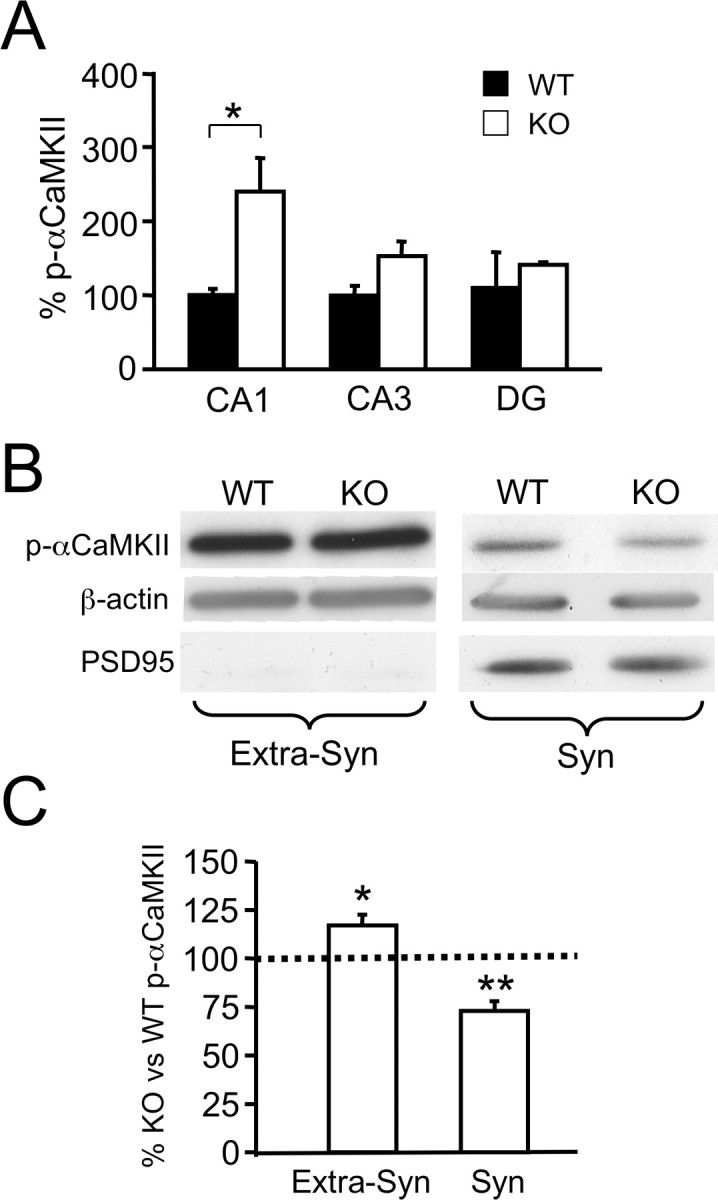Figure 4.

Changes in αCaMKII T286 phosphorylation in the hippocampus of Htr1aKO mice at a subregional and subcellular level. A, Quantification of p-αCaMKII immunoreactivity from Western blot analysis of hippocampal fractions enriched in CA1, CA3, or DG region from P21 wild-type (WT) or Htr1aKO (KO) mice after 20 min exposure to a novel environment. Level of p-αCaMKII in hippocampal CA1 but not CA3- or DG-enriched fractions was significantly increased in KO compared with WT mice (CA1: WT, n = 4; KO, n = 3; CA3: WT, n = 4; KO, n = 3; DG, WT, n = 4; KO, n = 2). Data are expressed as percentage optical density (intensity units per square millimeter) versus WT, CA1. B, Representative bands from Western blot analysis of p-αCaMKII, actin, and postsynaptic density-95 (PSD95) immunoreactivity in synaptosomal (Syn) and nonsynaptosomal (Extra-Syn) cytosolic fractions from pooled hippocampi of P21 WT and KO mice. C, Quantification of immunoreactivity revealed a significant increase in nonsynaptosomal p-αCaMKII as well as a decrease in synaptosomal p-αCaMKII in KO mice compared with WT (Syn, n = 6 pools; Extra-Syn, n = 4 pools). Mice were exposed for 20 min to a novel environment before being killed. Data are expressed as the percentage of optical density (intensity units per square millimeter) relative to WT (mean ± SEM); the intensity of bands was normalized versus actin; PSD95 immunoreactivity was used to assess the purity of the nonsynaptosomal fraction. A Kolmogorov–Smirnov (nonparametric) test was used to assess statistical significance in the pooled-samples experiment (C). Error bars indicate mean ± SEM. *p < 0.05; **p < 0.01.
